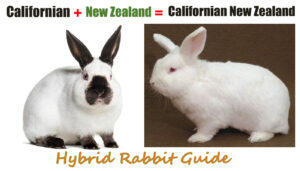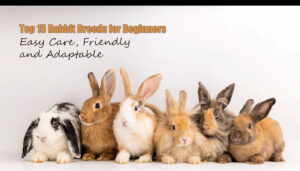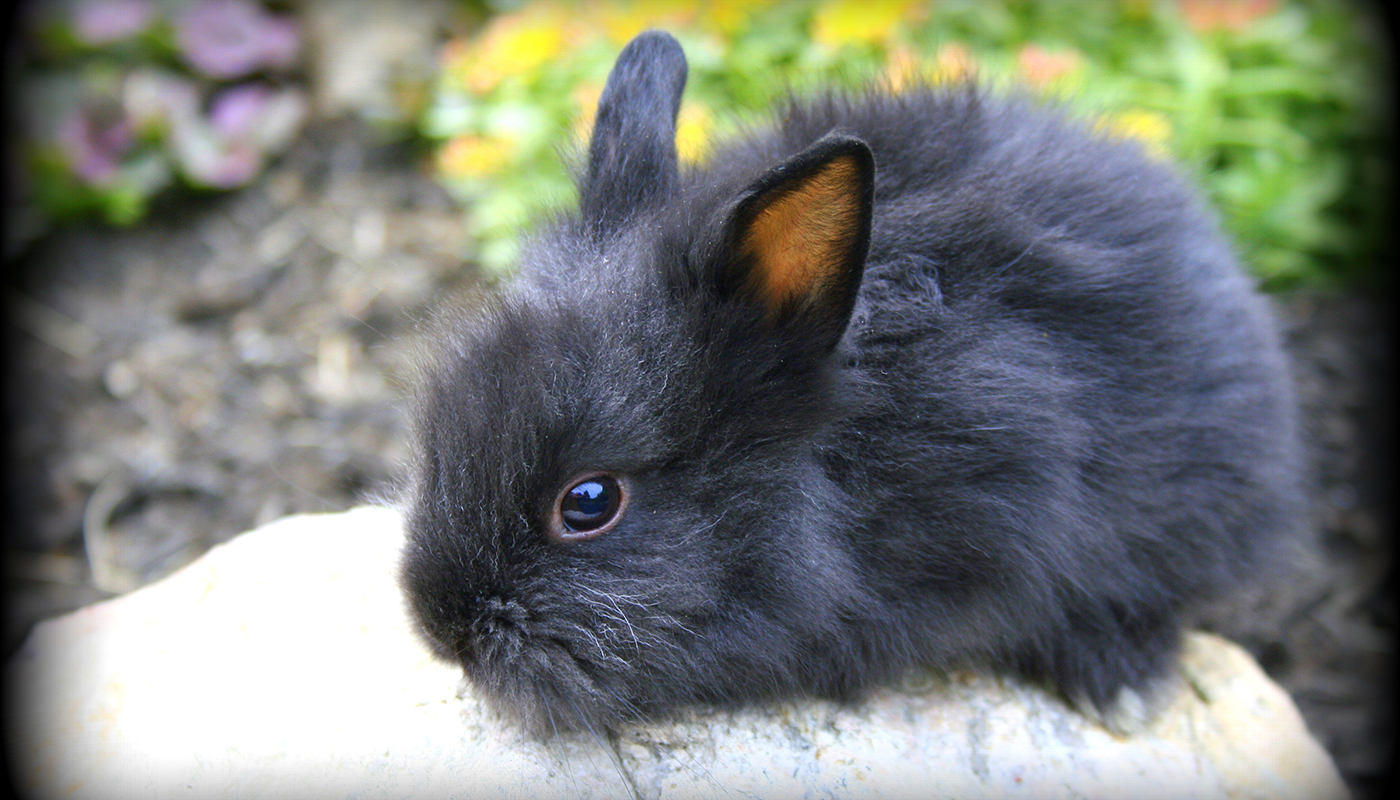
The Cinnamon rabbit breed is the result of an Easter present given to a young girl. These pretty rabbits are quite a rarity and spice up any rabbit colony. There are not too many of them around and are only found in the United States of America. They are in need of new breeders to help increase their numbers.
They have a great temperament, make excellent show rabbits and great pets or rabbit companions. They do need quite a bit of room to move about in and expend their energy but it is well worth it!
BREED PROFILE OVERVIEW
|
|
|---|---|
| Breed Name: | Cinnamon Rabbit |
| Other Names: | None |
| Country of Origin: | United States of America |
| Breed Purpose: | Meat, fur, exhibition, and pets |
| Breed Size: | Large |
| Breed Weight: |
Female/Doe: 9 to 11 lbs. Male/Buck: 9 to 11 lbs. |
| Breed Color(s): |
They have a very distinctive coloring which is a ground cinnamon color some refer to it as rust. This color can be found across its back marked with a uniformed grey tickling. Their underside/belly is dark or smoky and their whole body has an orange underlying tinge to it. Their muzzles are a dark smoky grey as are the outline of their ears and feet. |
| Physical Appearance: |
The Cinnamon rabbit breed has a commercial body type that is medium in length with shoulders that are not as wide or deep as their hips and their heads are wedge-shaped and in proportion to their body.
Their ears are long, erect and start close together on their heads but do not touch. They have dark eyes, dark muzzle and a short soft coat that is quite easy to maintain. |
| Temperament: | The Cinnamon Rabbit breed is mostly calm, docile, friendly and very curious rabbits. |
BREED CHARACTERISTICS
- The breed should be a ground cinnamon color and have smoky gray shading with what is called “lap spot” of a rusty color inside the back legs of the breed.
- The standard for the breed is quite strict in called for the hair that touches the skin should be orange and the muzzle and ears should also be a smoke-gray color.
- They have a decent sized litter and are good mothers with great motherly instincts to protect and nurture their young.
- Their young grown at a good pace and are very energetic little bunnies.
- The average lifespan of the Cinnamon rabbit breed is around 5 to 10 years.
| Good Pets? | They make good pets for elderly, first-time rabbit owners/breeders and families with older children as they are not recommended for smaller children. |
| Child Friendly? | Children should be supervised around animals and properly taught how to look after them and handle them. Rabbits can bite and scratch |
| Ideal Climate: | All climates – rabbits should never be left outside without proper shelter and housing that must be raised off the ground and predator safe. |
| Conservation Status: | Not listed by the *ALC Status/Rarity:Not listed by the ALC |
| Recognized by the ARBA? | Yes – they were accepted to the ARBA in the early 1970s |
| Rabbit Associations/Clubs: | Cinnamon Rabbit Breeders Association |
| Where to buy them? | You can try the Rabbit Breeders Directory or the Cinnamon Rabbit Breeders Association for more information on where to buy the Cinnamon Rabbit breed, clubs and up-to-date listings of registered breeders. |
| Note: *ALC stands for American Livestock Conservancy | |
GENERAL INFORMATION
Although not listed by the American Livestock Conservancy a study that was done revealed the breed to be the third most rare breed in the United States of America. They are not found anywhere but in North America and they can be quite hard to come by.
The breed needs help and would make a nice spicy addition to any rabbit hutch.
The Cinnamon rabbit breed was created by chance by a young brother and sister in Missoula, Montana in the United States of America.
HISTORY
The history of the Cinnamon rabbit dates back to the Easter season of 1962 when brother and sister Belle and Fred Houseman bred their Chinchilla doe with their New Zealand buck. The children were on allowed to keep one buck from this pairing by their father.
Their father let them join their local 4-H group and became interested in the breeding and showing of rabbits. They received a Checkered Giant doe and a Crossed Californian doe which they crossed with their crossed-buck.
The Californian doe birthed one russet colored bunny in its litter and the Checkered Giant doe had two russet colored bunnies in her litter after a few attempts. Their father Ellis Houseman believe that only pure-bred rabbits should be kept and shown but he reluctantly let his children keep these two russet colored bunnies (one was male the other female) from the Checkered Rabbits litter.
They bred these two russet colored rabbits together and 70 percent of their off-spring presented with a new Auburn shaded fur. They started to refer to the color as cinnamon of which it reminded them.
Their father soon took notice of the new breeds beautiful soft fur with a unique color that had a glossy sheen and presented it to an ARBA judge and board member at the time, J. Cyril Lowett. It was he who thought there may be a strong possibility that the breed could become a recognized breed in the United States.
There were some requirements that the breed would have to adhere to and pass in order for it to become a registered breed. Carefully adhering to the changes advised by J. Cyril Lowett the Houseman family bred the Cinnamon rabbit breed which then would have to be passed by three American Rabbit Breeder Association conventions.
The first convention they took then too was the American Breeders Association convention in Calgary, Canada that was held in 1969. At this convention, the breed was approved.
The next convention was in 1970 in Syracuse, New York which the family could unfortunately not attend. They had to send the rabbits to the convention, but things went quite wrong. On the journey, the rabbits picked up a virus that killed some of the rabbits with others getting very sick. As the rabbits that made it were not in a very good condition they were not passed at the convention.
Despite this big setback the Housemans continued to develop the breed and took them to the next convention which was in 1971 and held in Mexico. The family was staying in a trailer in Mexico for the convention and a severe storm made them have to evacuate their trailer. A dog also managed to get into their rabbitry in Mexico and killed three of there best does. Even through all the disasters that befell their trip the breed managed to pass the convention and got some good reviews.
The third and final convention to get the rabbits passed as a breed was in 1972 and held in Tacoma, Washington. It was here the breed passed its third ARBA convention and become officially recognized and added to the American Rabbit Breeders Association Standards.
Even though, due to some genetic features, they are not listed by the American Livestock Conservancy they are considered to be quite a rare breed to find in America. In fact, a study revealed them to be the third rarest breed in the United States of America.
It is best to get in contact with officers or members of the Cinnamon Rabbit Breeders Association in order to find the best place to obtain these rabbits should you wish to own or breed them. They will also be able to give valuable advice on how to care for them, the best suited diets, etc.
Video
USEFUL LINKS
- American Rabbit Breeders Association
- Fur Commission USA
- North American Meat Institute
- American Livestock Conservancy
- Animal Shelter (ASPCA)
- American Veterinary Medical Association
- American Animal Welfare Society
- American Animal Control
- American Society of Animal Science
- United States Department of Agriculture
- United States Department of Agriculture – Rabbit Meat
 Californian x New Zealand: The Ultimate Hybrid Rabbit Guide
Californian x New Zealand: The Ultimate Hybrid Rabbit Guide Belgian Hare Rabbit – Everything You Need to Know
Belgian Hare Rabbit – Everything You Need to Know Lionhead-Angora Mix Rabbit: Charming Hybrid Pet
Lionhead-Angora Mix Rabbit: Charming Hybrid Pet Silver Rabbit – Everything You Need to Know
Silver Rabbit – Everything You Need to Know Chinchilla Angora: The Perfect Blend of Giant Chinchilla and Giant Angora Rabbits
Chinchilla Angora: The Perfect Blend of Giant Chinchilla and Giant Angora Rabbits Top 15 Rabbit Breeds for Beginners: Easy Care, Friendly, and Adaptable
Top 15 Rabbit Breeds for Beginners: Easy Care, Friendly, and Adaptable The Ultimate Guide to Harlequin Lop Hybrid Rabbit: Characteristics, Care, and More
The Ultimate Guide to Harlequin Lop Hybrid Rabbit: Characteristics, Care, and More French Angora Rabbit – Everything You Need to Know
French Angora Rabbit – Everything You Need to Know Rex Rabbit – Everything You Need to Know
Rex Rabbit – Everything You Need to Know Lionhead Rabbit – Everything You Need to Know
Lionhead Rabbit – Everything You Need to Know Discover the Fascinating Lion Dwarf Hybrid Rabbit: Lionhead x Netherland Dwarf Mix
Discover the Fascinating Lion Dwarf Hybrid Rabbit: Lionhead x Netherland Dwarf Mix English Spot Rabbit – Everything You Need to Know
English Spot Rabbit – Everything You Need to Know